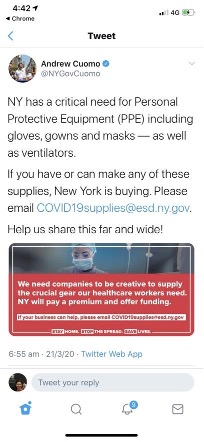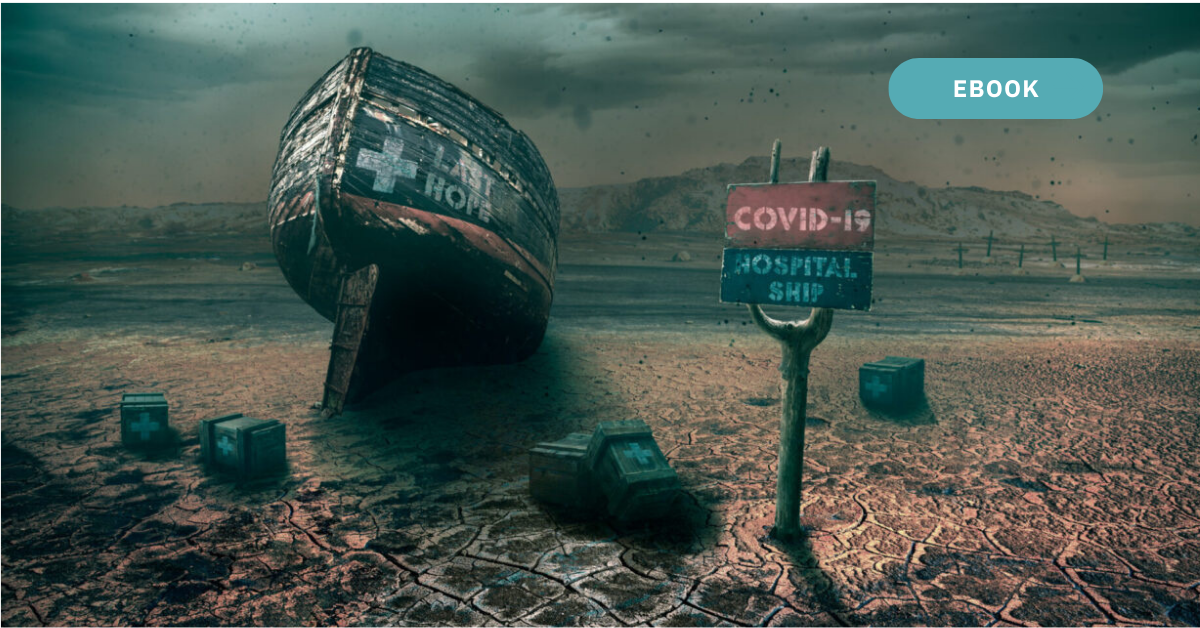Tender Trends: Then and Now chronicles the evolution the procurement process — from its early days of materials ordering to its rise in shaping policy implementation, industry innovation and social change. Tender Trends: Then and Now is written by bid management veteran and Bidhive CEO Nyree McKenzie who has dedicated more than half her life to the profession.
In this final chapter we consider the catalytic events that have once again led to new procurement reforms.
Black Swan
When we think of Black Swan events – “large-scale unpredictable and irregular events of massive consequences’- the world wars, the internet, the global financial crisis – these are the events that profoundly shaped our world and disrupted companies to thrive, or demise.
The COVID-19 outbreak brought unprecedented challenges for governments to ensure not only the health of their citizens but also public service continuity. It was the biggest humanitarian challenge of the century, and one that quickly impacted global commerce and trade. Extended factory shutdowns, as well as quarantine and travel restrictions, sent shockwaves through the global economic pillars of education, health, manufacturing and tourism and every link in the supply chains that supported them.
Governments acted quickly with an unprecedented outlay of fiscal spending.
With no time to ponder on how to fix the broken or outdated systems or rewrite procurement policy almost overnight emergency procurement legislation to bypass competitive bidding was enacted. It was a free for all grab between countries for emergencies supplies.
Supply chain chaos
Supermarket shelves were emptied of toilet rolls, flour and pasta, and global leaders put out critical calls on social media for ventilators and personal protective equipment.

Above: The 56th govenor of New York Andrew Cuomo puts the public call out on Twitter for emergency supplies
But it didn’t all go to plan.
Opportunists
The prospect of overnight business success prompted manufacturers without medical experience or certifications to exploit an unprecedented opportunity.
In normal times it’s estimated that 1 in 3 government dollars is spent on government contracting and 10% to 25% of a public contract’s value is lost to corruption or mismanagement. But these were not normal times, and the bad procurement decisions weren’t just costly. They were deadly.
A recent study across 58 countries found that fraud and corruption in healthcare delivery contributed to COVID-19 related deaths in every third country.
Each of us felt the impact of corruption in the procurement process. As Covid-19 unfolded companies with no experience, and those with dubious political connections reaped billions from medical supply and protective equipment contracts being awarded without competition. In many cases supplies never arrived.
Hundreds of thousands of counterfeit medical masks using fake brand names of medical supply companies such as 3M were seized in a factory in Turkey; and a 90-country sting operation by Interpol of counterfeit medical items resulted in 121 arrests. In the UK hundreds of commercial contracts works over a £1bn were awarded to private companies to administer tests, to provide food parcels and personal protective equipment (PPE), and to run and operations room alongside civil servants. “Friends” of politicians in the US and the UK were awarded no-competition contracts for millions above benchmark prices not once, but multiple times, and companies with no previous track record were handed lucrative contracts without any procurement procedures all around the world.
Despite the fact that over the last 30 years over 83 percent of deaths from building collapses in earthquakes have occurred in countries with corrupt procurement practices, Covid-19 corruption hit a nerve with the every day person and became the enemy in common working against all the good work the world was doing to fight the pandemic together. Procurement would no longer have to be accountable to to itself, but to the citizens who expected nothing less than transparency into how and where their taxpayer money was being spent.
Fast-tracked digital transformation and SME procurement reform

New business models quickly came to market. Telehealth, video conferencing, cloud collaboration and other productivity tools forced numerous companies to review their company IT strategies as a top priority. So too, was procurement reform.
In 2021 governments began to open up their data to follow the money across the entire chain of public contracts. Finally, the taxpaying public would know who had been awarded contracts, and for how much. New thresholds and policies to achieve non-discrimination in the supply chain would be another critical factor to stimulate market participation to get the world economy back on its feet. But to pave the way for fair competition, procurement would need to do far more than just open the gates. They’d need to overhaul the system with better access to bid opportunities; a system of record to manage the bidding process and the many stakeholders involved; and disclosure of contracting information to increase the average number of bidders per tender to rebuild trust in government and to promote accountability across the full procurement lifecycle and to implementation.
This would not be a system that could be done in a silo with outdated, fragmented systems. Whether procurement would be ready or not, it was going to come as an ecosystem – a new model where knowledge, data, tools, templates and best practice methodology and coaching would be supported by a resource or help desk to respond to the organisation’s new streamlined process automation. New agile decision making would be supported by data analytics; and suppliers identified by real time market intelligence based on performance metrics and market factors.
New tools and technologies

What will the new tender trends look like? Some forward looking approaches will include:
- opportunities that are proactively planned for – with the rebid starting the moment a new contract is signed. Monitoring and evaluation, the tracking of key metrics, customer or client experience and the reporting of outcomes will become common practice for companies seeking to tender to win and retain business;
- solutions that are backed by evidence or market validation and aligned to social or other policy drivers;
- solutions that are innovative and delivered with supply chain partners connected or linked up to provide richer collaboration and customer experiences;
- the creation of a portfolio of suppliers who can be called on in an emergency, and the awarding of contracts to capable but more importantly – reliable – suppliers;
- embedded digital enablers such as robotic process automation (RPA), artificial intelligence (AI), advanced analytics, and peer-to-peer platforms. This data will be used to weave market insights and business intelligence with spend/supplier data to offer predictive analytics, knowledge management and deep search to capture, organise and reuse knowledge gained from each project; and automating routine tasks to minimise manual handling of compliance-oriented tasks or financial-related data.
Flying the plane while you build it
The technology sector will continue to play a significant role in supporting and accelerating governments, citizens and businesses’ ability to adapt and innovate through trial and error to become learning machines so that they come back stronger and ultimately, becoming ‘antifragile’ to shield them against constant disruption that is their new normal. Co-design with citizens and stakeholders for policy and service design has often been attempted but frequently not realised as the structure and culture of government is not suited to this approach. Policy officials have traditionally not responded well to the risks of diminished control. Yet the response to Covid-19 and the shift to new social norms around social distancing and new ways of working has highlighted that widespread system and cultural change can really happen when we embrace an experimental, market-oriented approach to change.
There will be many positive aspects that come from this historic chapter. One such aspect is using procurement to achieve policy goals to build business resilience, embracing innovation, supporting national production and celebrating diversity in suppliers.
With a more integrated and open system, both procurement and supplier teams will likely become more involved in complex sourcing to meet faster time-to market objectives. In the future, this greater transparency, reduced procurement duplication and broader market participation might be realised in a truly two-sided marketplace.
Read more
Tender Trends: Then and Now Chapter 1 – Clerical
Tender Trends: Then and Now Chapter 2 – Corruption and Cost Cuts
Tender Trends: Then and Now Chapter 3 – Collapses and Compliance
Tender Trends: Then and Now Chapter 4 – Chains of Command
Tender Trends: Then and Now Chapter 5 – Citizens





